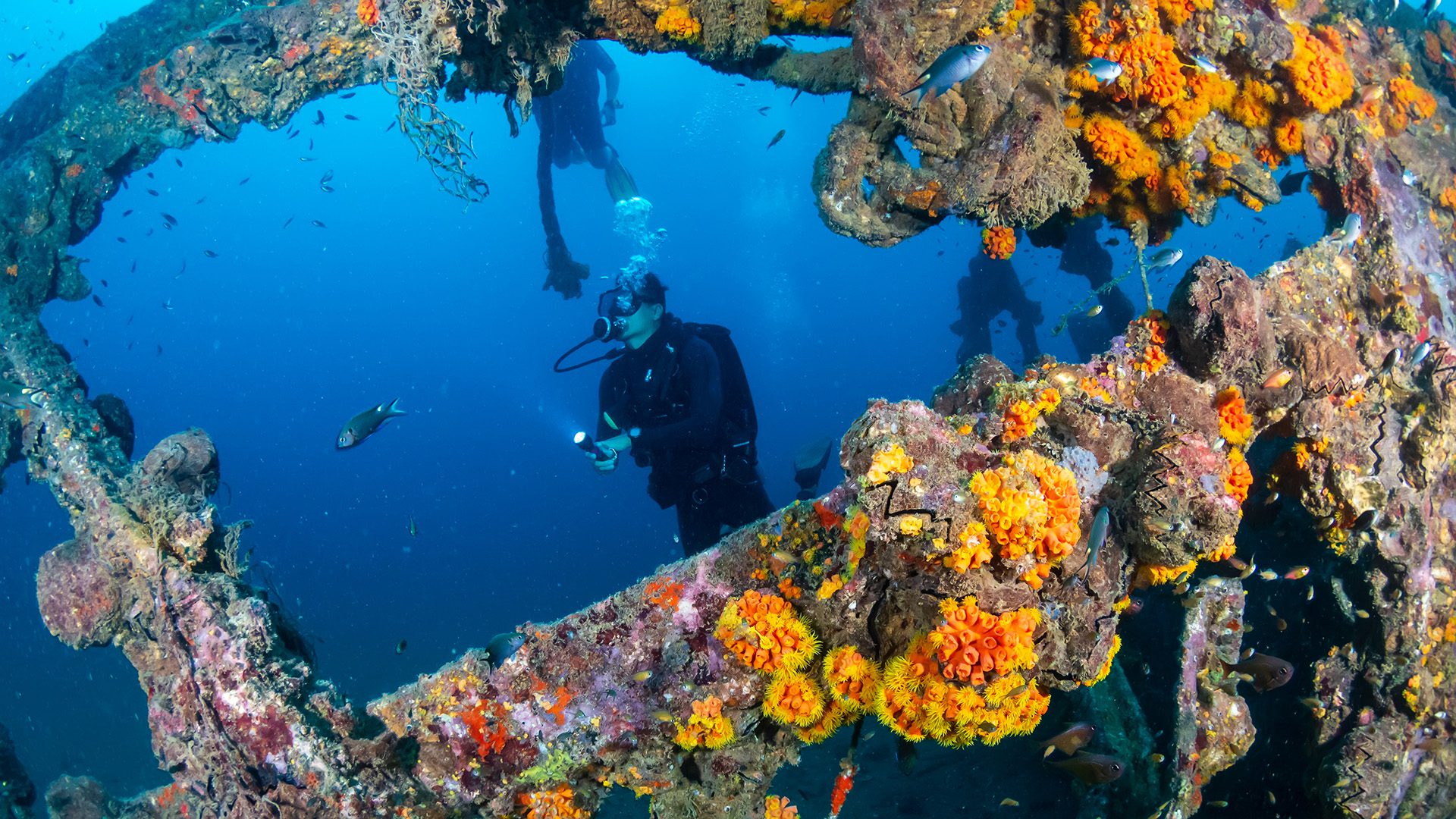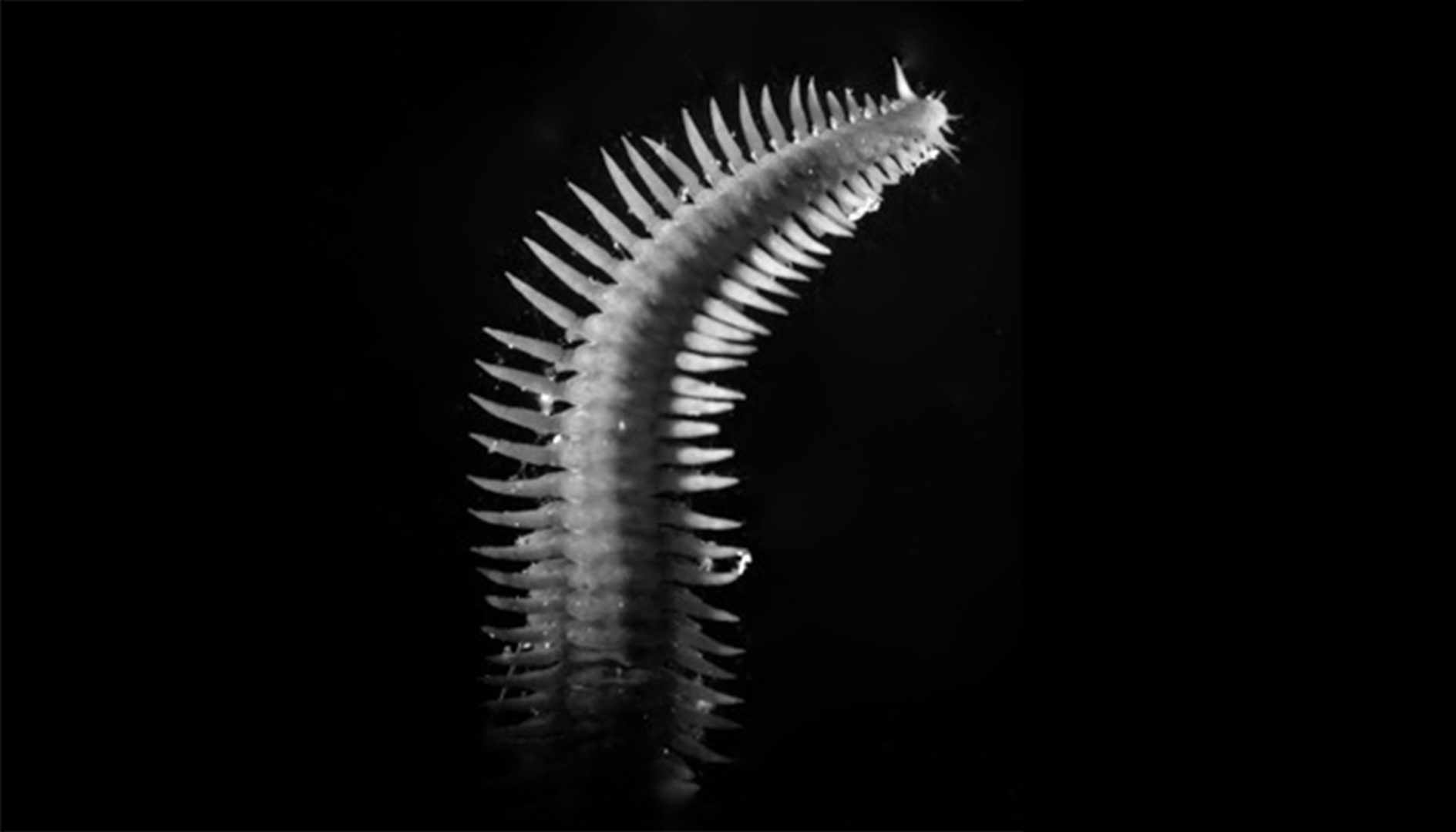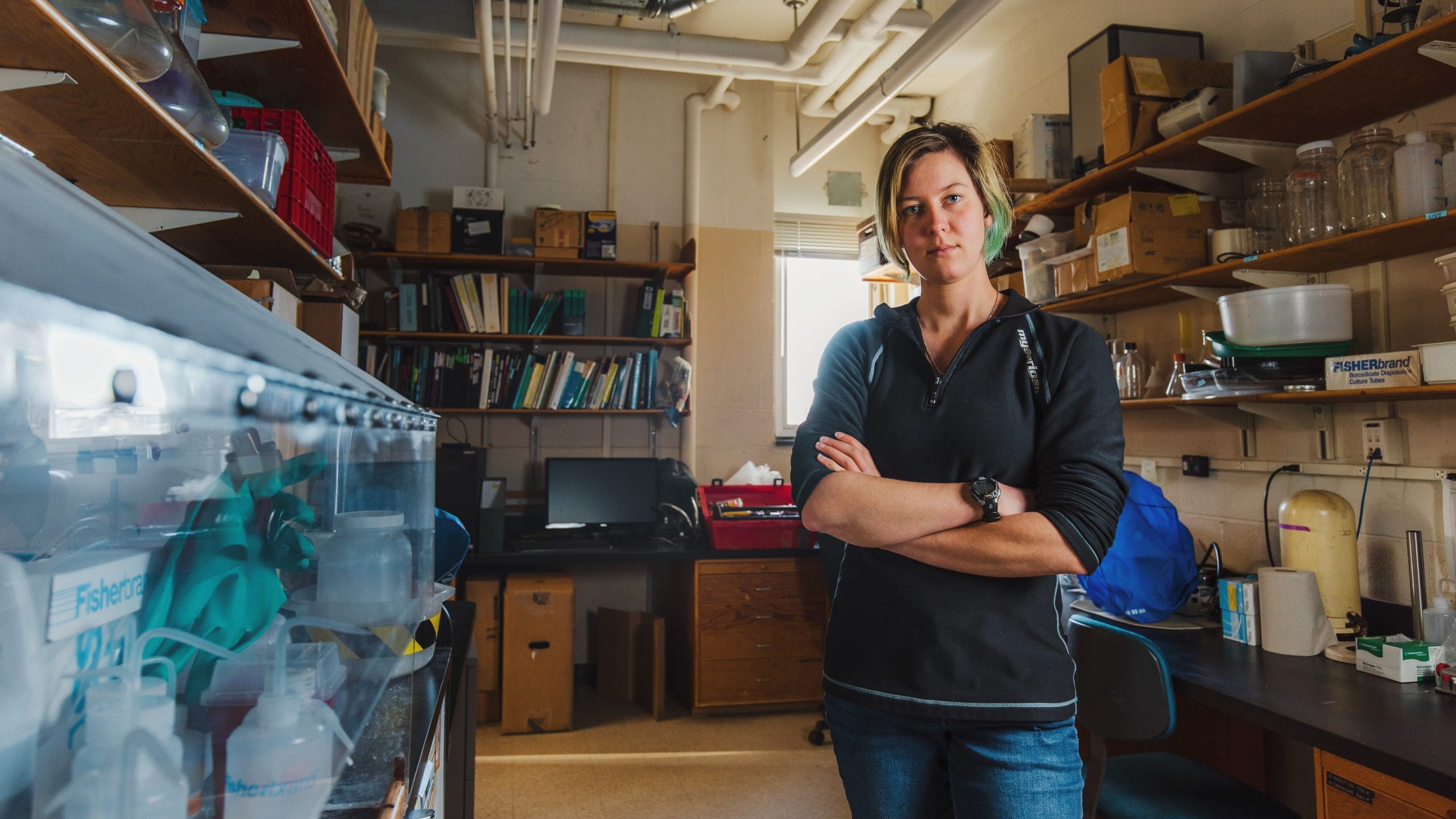
Falling in love with deep-sea parasites
At hydrothermal vents there are body-snatchers, intestinal hitchhikers, and chest-bursters, but something about them is still alluring to Lauren Dykman
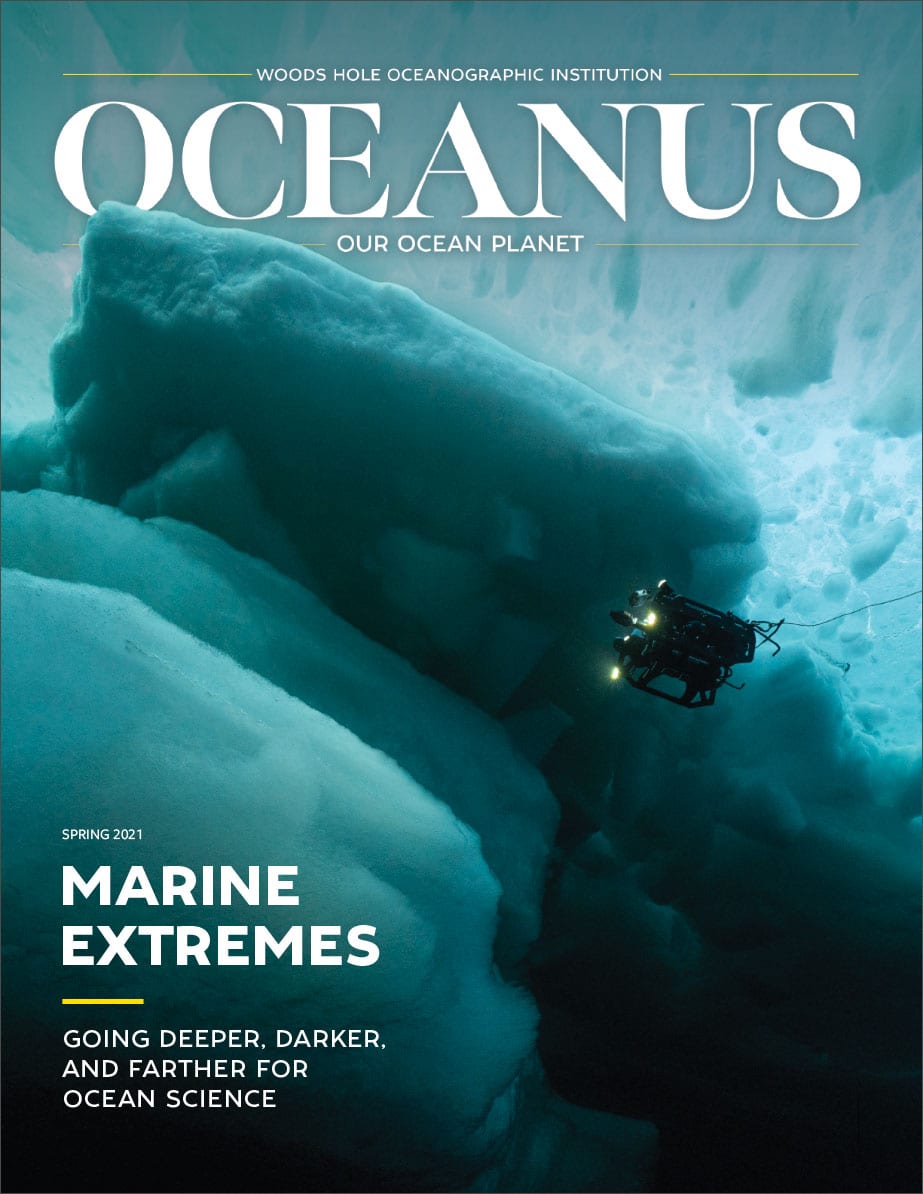 This article printed in Oceanus Spring 2021
This article printed in Oceanus Spring 2021
Estimated reading time: 3 minutes
Deep-sea parasites are body snatchers, intestinal hitchhikers, and chest-bursters, but something about them is still alluring to Lauren Dykman.
Far be it from anyone to "yuck" the proverbial "yum," but one does wonder what could possibly be admirable about the ocean's analogs to our terrestrial ticks and tapeworms. Lauren Dykman, an MIT-WHOI Joint Program PhD student and benthic ecologist, has dedicated her blooming career to understanding the diversity and life cycles of parasites living along the ocean's deep hydrothermal vents.
"Diverse, functioning, healthy ecosystems actually have a higher diversity and abundance of parasites," says Dykman. "So parasites can be a sign of an ecosystem being healthy and functioning properly"-indeed, that there may be energy to spare.
To date, not many deep-sea parasites have been studied as scrupulously as their hosts. Dykman cranes over a microscope every day to make headway in this effort—collaborating with taxonomists when she finds an unfamiliar creature. Over the years, she’s become familiar with some charismatic carapaces. Among them: gummy bear–like copepods (pea-sized crustaceans) velcroed tightly inside the mouths of fish, a barnacle called a rhizocephalan that can hijack crab bodies, and a group of tiny, metamorphosing worms called digeneans—her favorite.
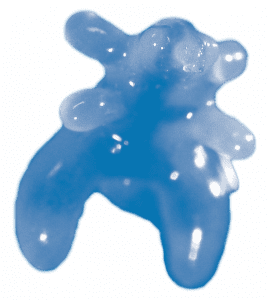
During a study in 1980, scientists from the University of Massachusetts Dartmouth and WHOI trawling the deepest waters along the New York Bight discovered that benthic, or bottom-dwelling, fish had more parasites per capita than those caught in the midwater. Of the more than 1,700 fish they collected, 80% had been infested with some kind of parasite.
What's odd is that even in the most extreme conditions, marine parasites have found a way to survive-even thrive. On hydrothermal vents, magma interacts with saltwater to make a scalding, oxygen-poor mixture, where only a proud few species of fish and invertebrates have been able to carve out a living. And still, many are parasitized.
"Right at the vent orifice you can have 400° C water," says Dykman. "An animal, for example, could be swimming in 2° C water, which is near freezing, and then a meter or so later it could be near boiling."
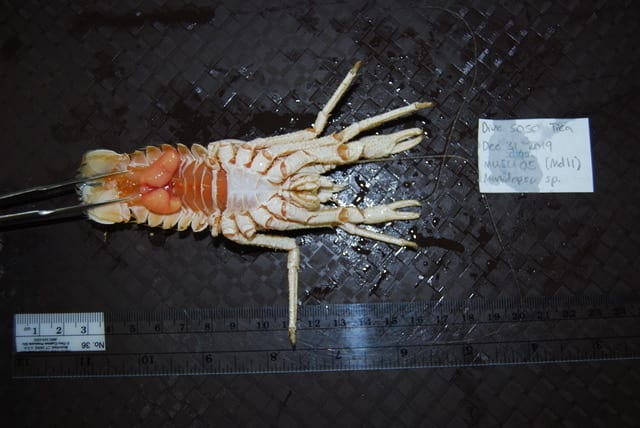
A squat lobster collected from V Vent along the East Pacific Rise is turned over, revealing the parasitic barnacle (rhizosephalen) controlling its motor functions. (Lauren Dykman, © Woods Hole Oceanographic Institution)
That's a tough life for parasites hitching a ride on moving animals like fi sh. Add to that volcanic eruptions, earthquakes, and humans mining for ores and minerals, and it's almost a miracle that any life manages to exist down there at all. Whether or not deep sea industrial activities profoundly affect parasites is something Dykman plans to examine more in time.
While she's not the first to study marine parasites, Dykman says it's still a wild and under-researched frontier in marine science. Most of the current literature focuses only on parasites of marine fish, often ignoring whole animal communities of other potential hosts, like crabs, snails, and other invertebrates. That leaves a lot of room for discovery.
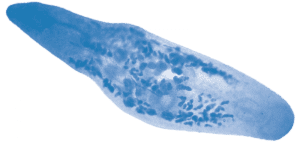
(Lauren Dykman, © Woods Hole Oceanographic Institution)
Since beginning her graduate work, Dykman has encountered 29 kinds of multicellular vent parasites in her dissections, including seven species potentially new to science-a virtual goldmine to someone just starting in their field.
As WHOI plots new expeditions to deep-sea vent sites along mountain ranges like the East Pacific Rise, only time will tell how many more she'll find.
"I know it sounds weird to say that I really respect and admire parasites," says Dykman. "To see animals that are making a living in, first, a very harsh environment, and second, in a way that requires so many pieces to fall into place-it's very encouraging to see examples of resilience."
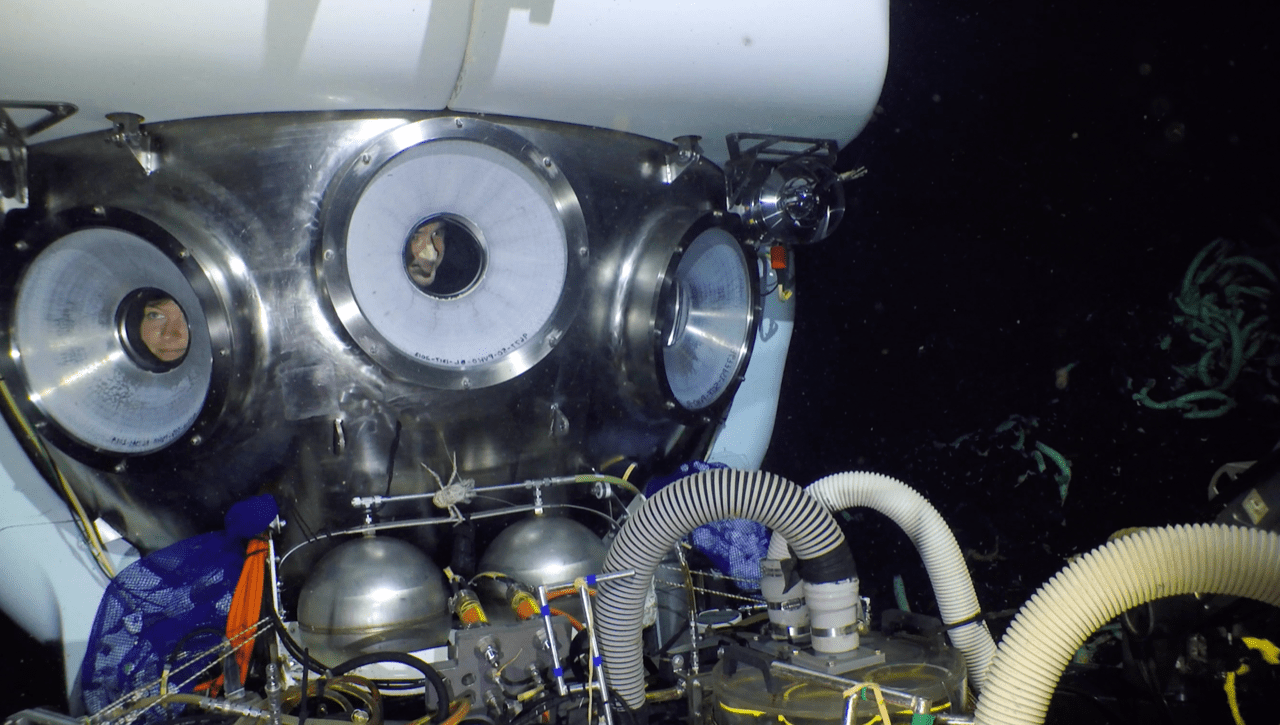
MIT-WHOI Joint Program student Lauren Dykman looks out on hydrothermal life with pilot Bruce Strickrott, on her first dive in HOV Alvin, December 2019. (Photo courtesy of NDSF, © Woods Hole Oceanographic Institution)

